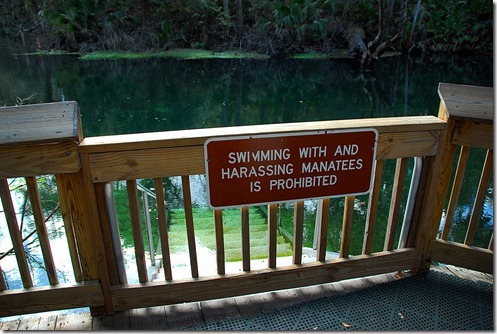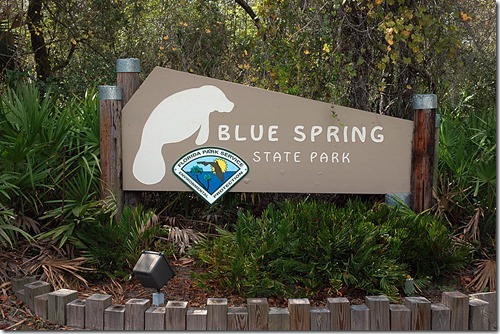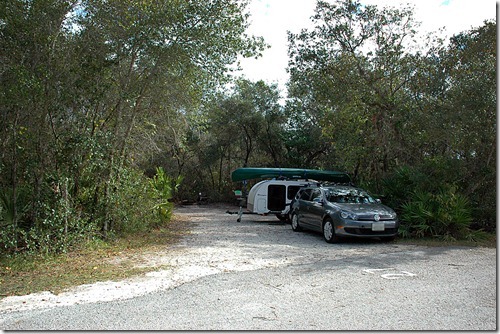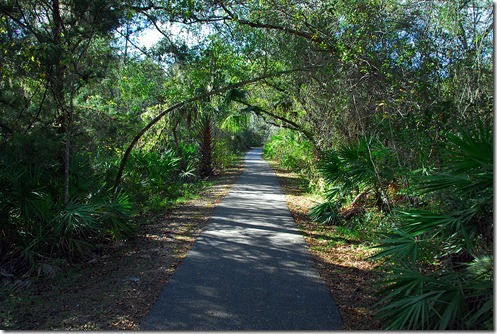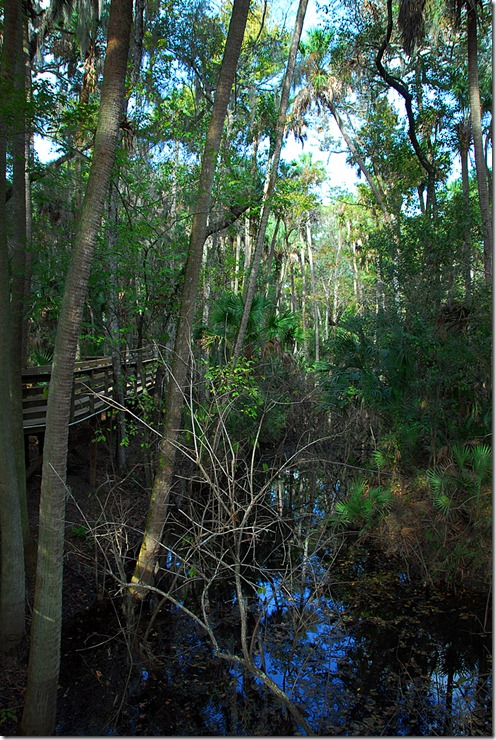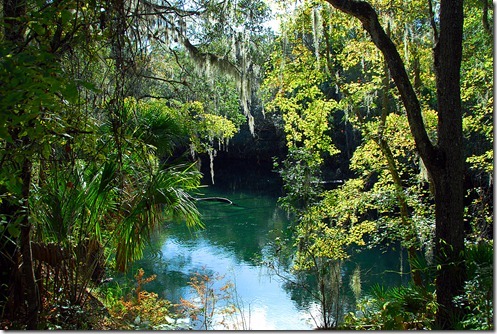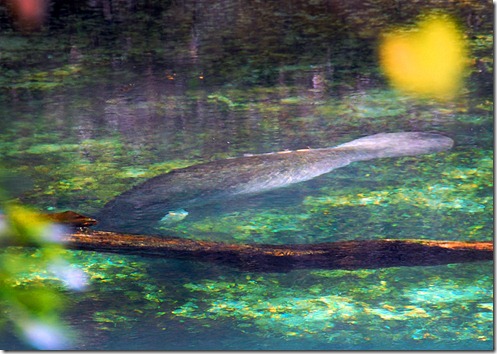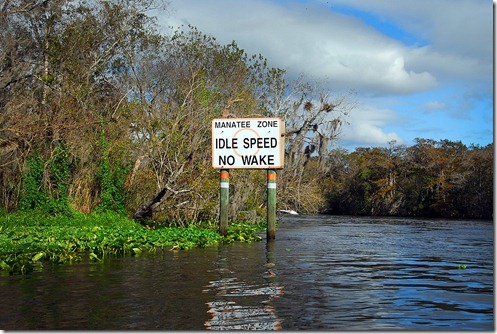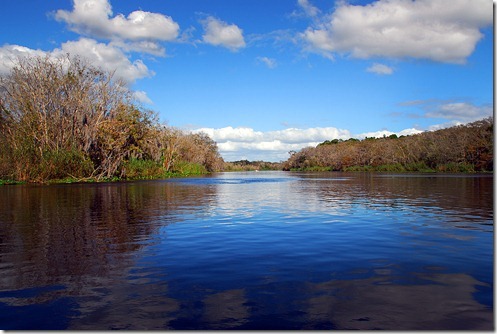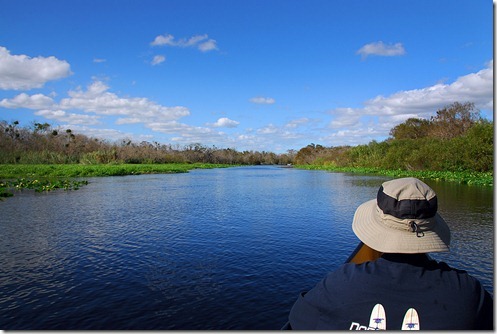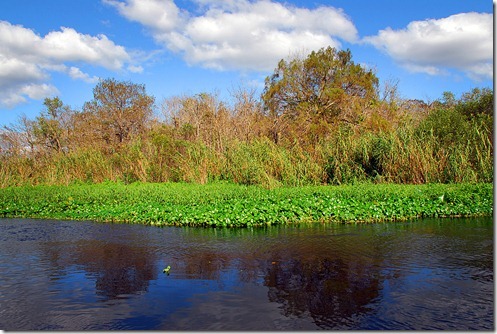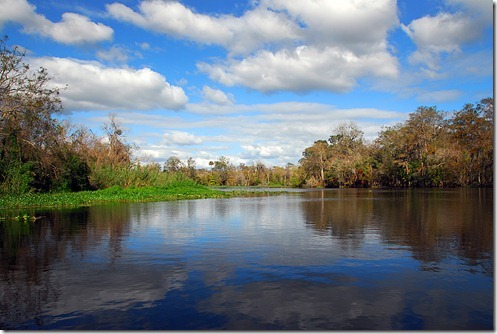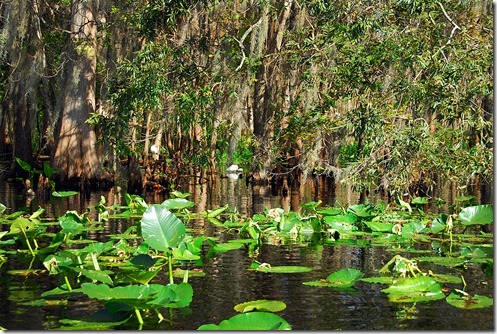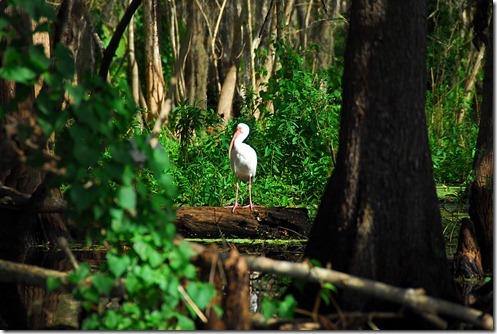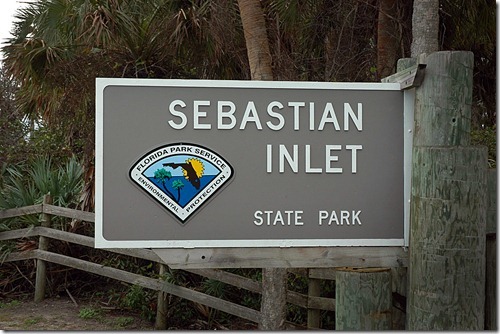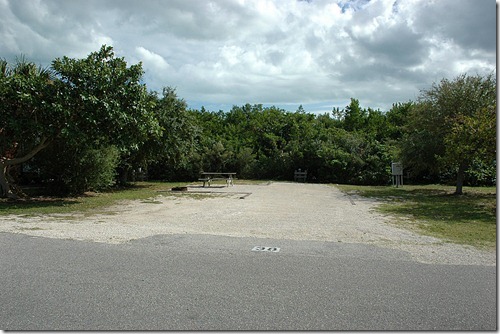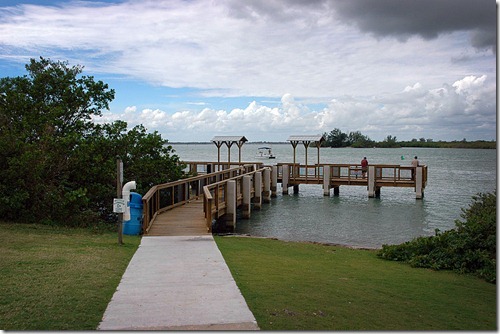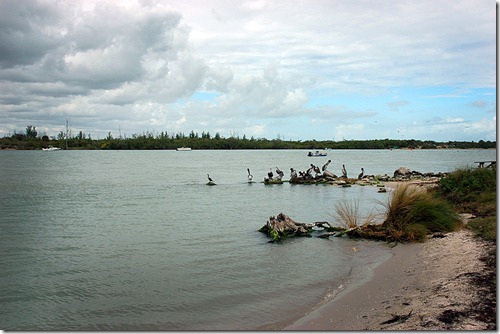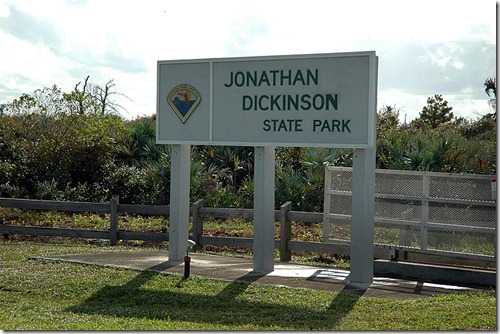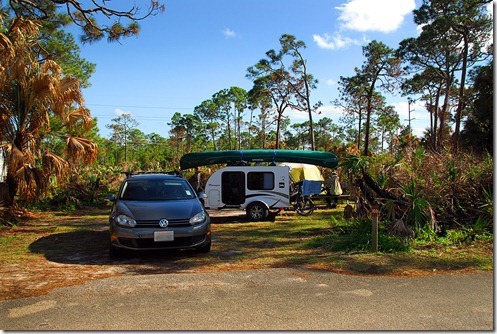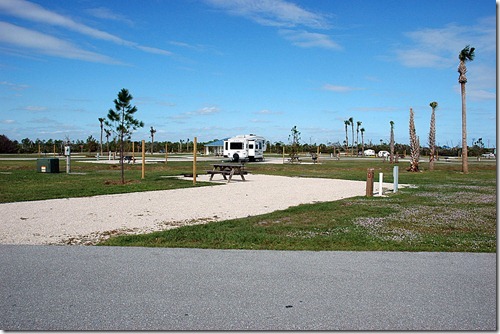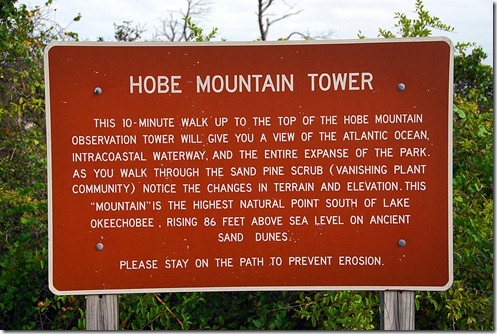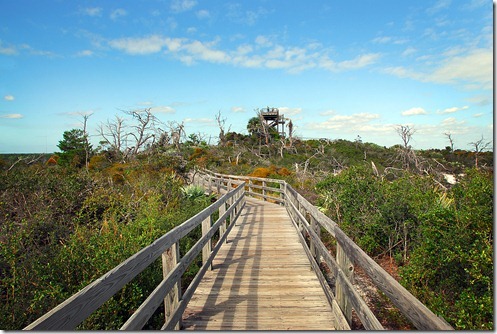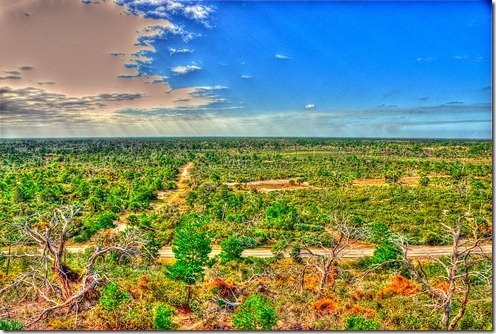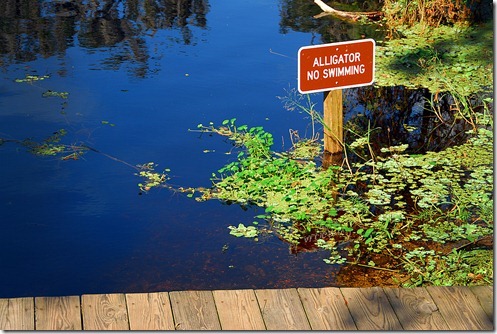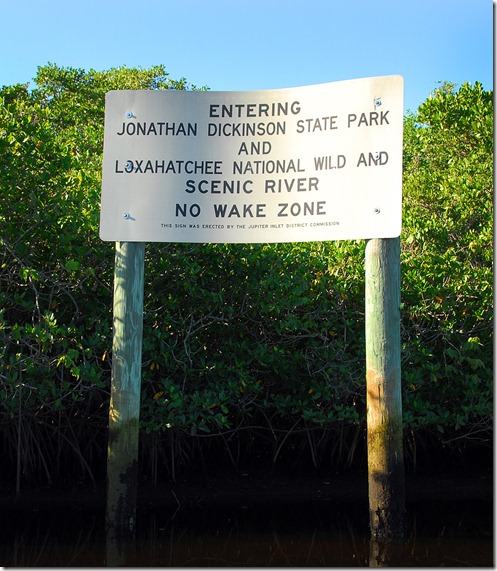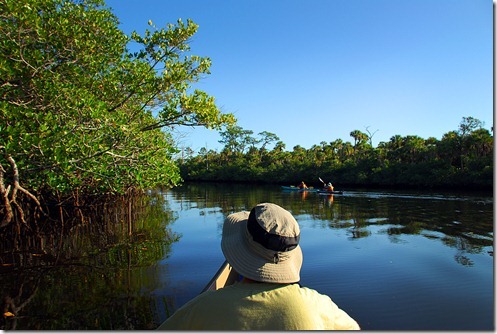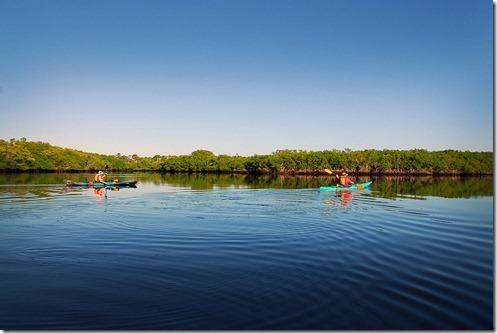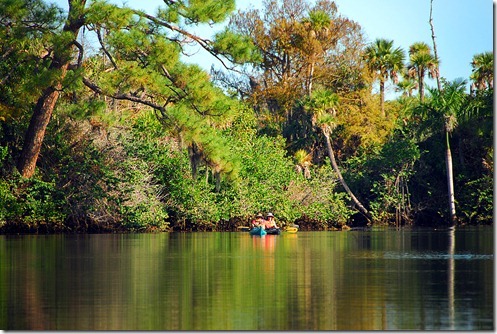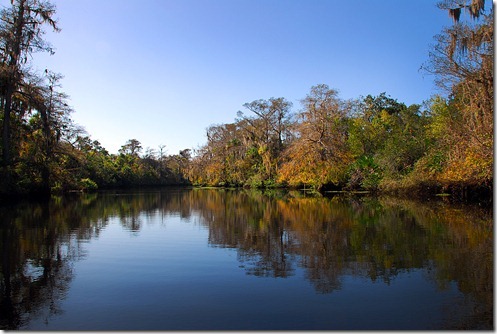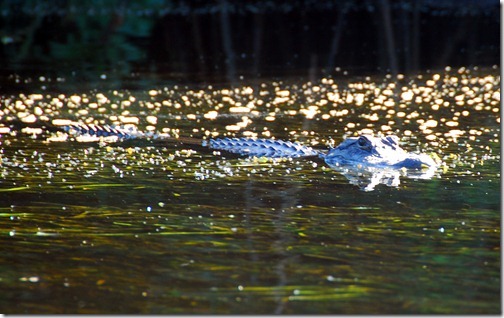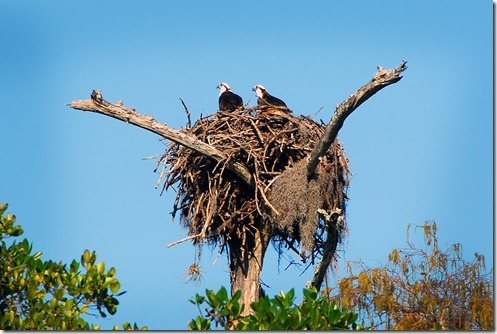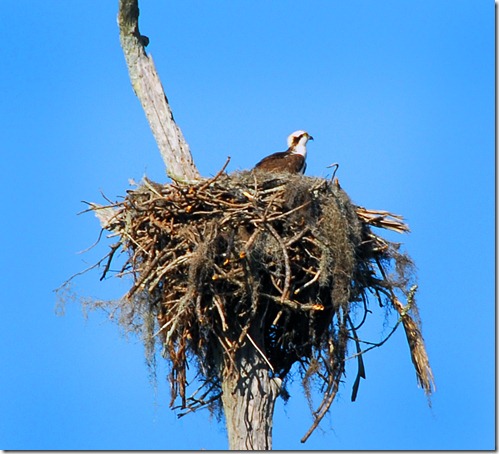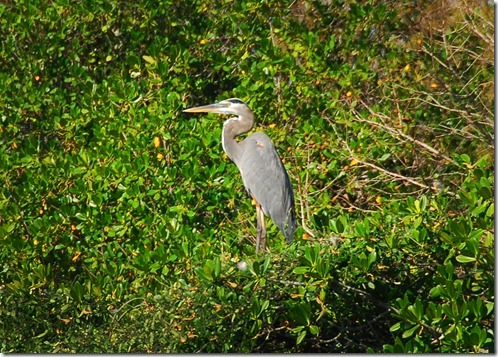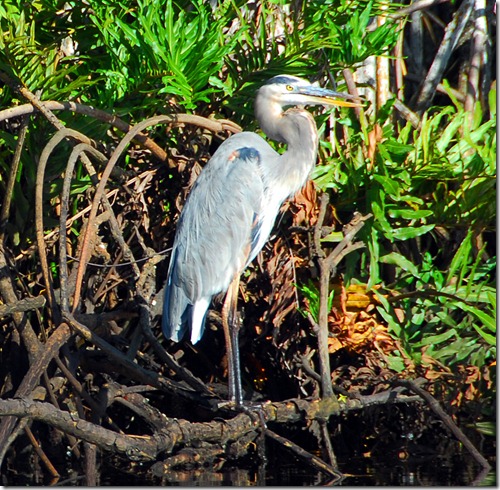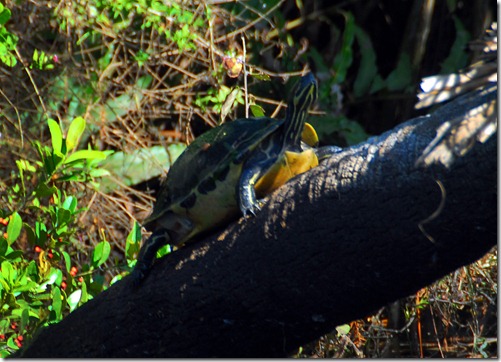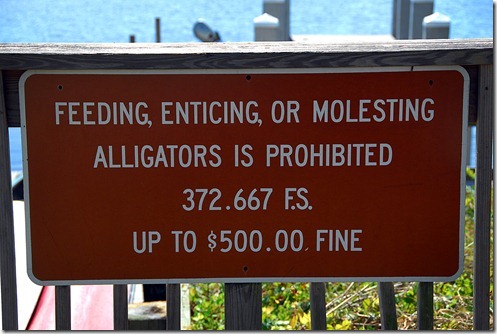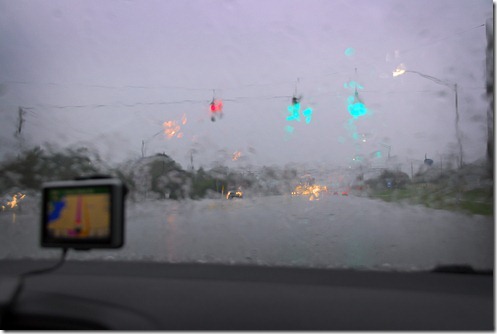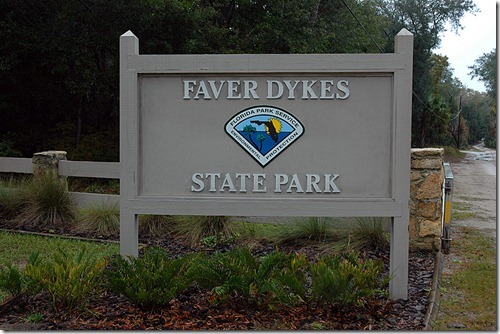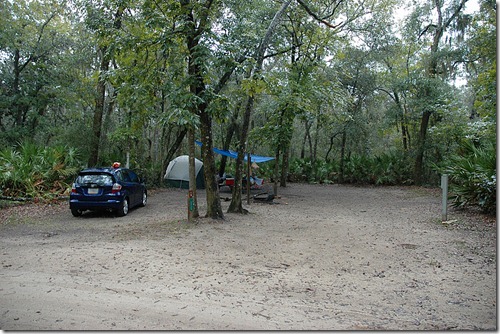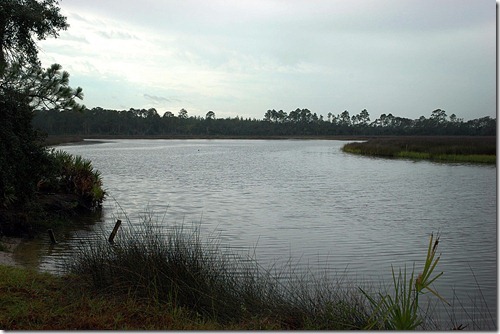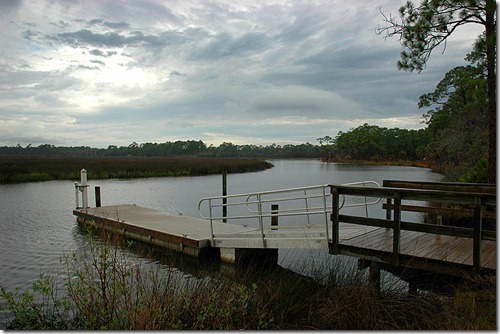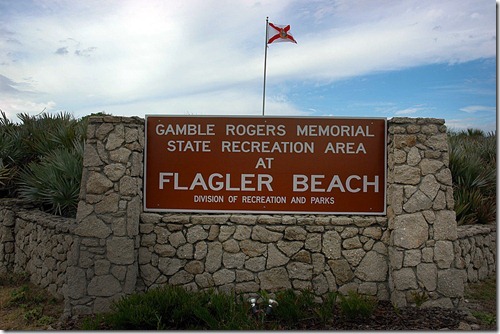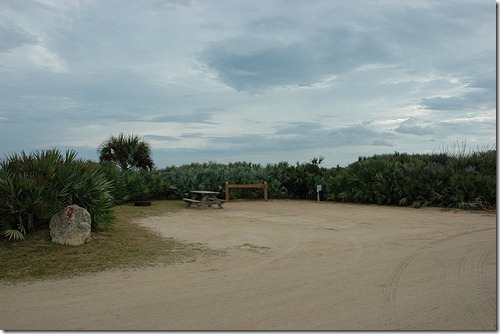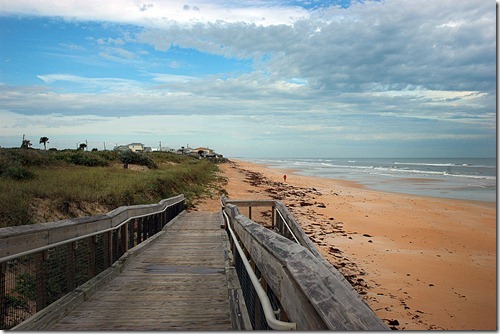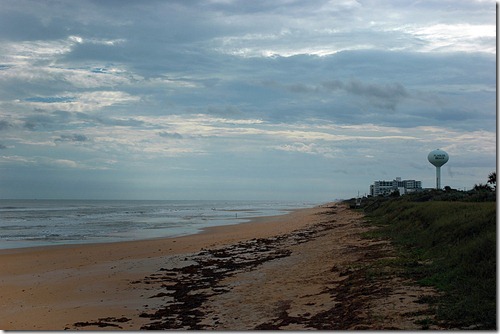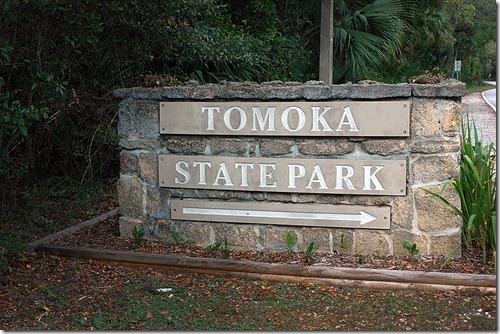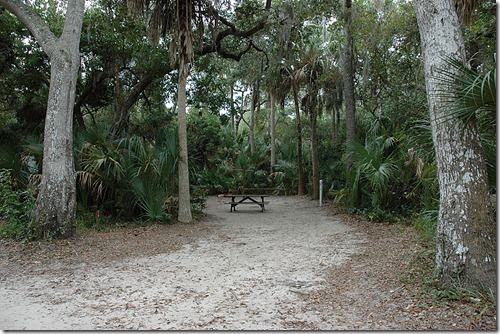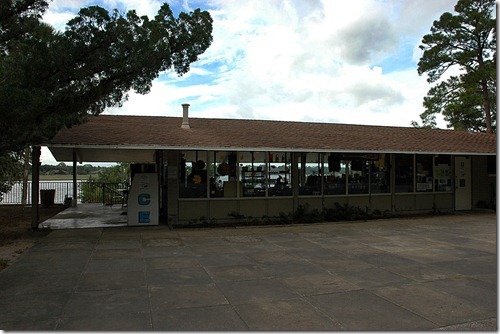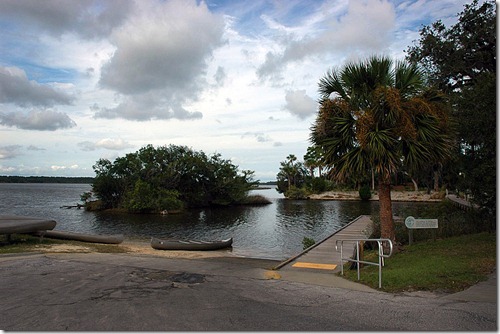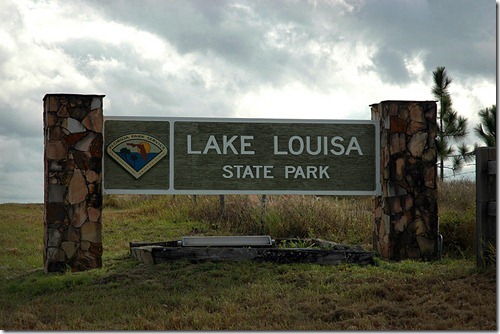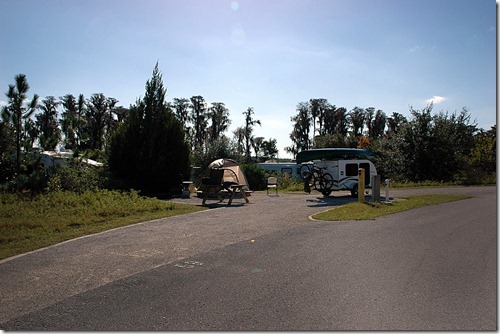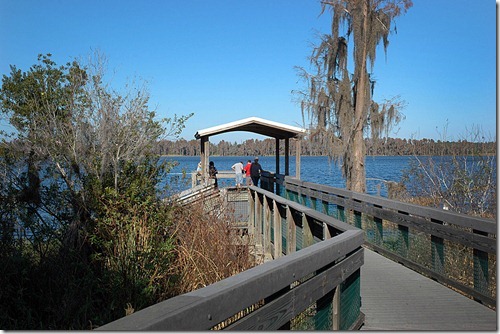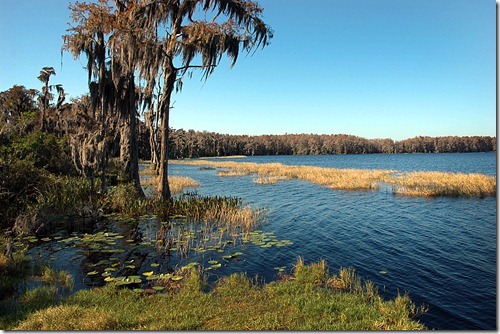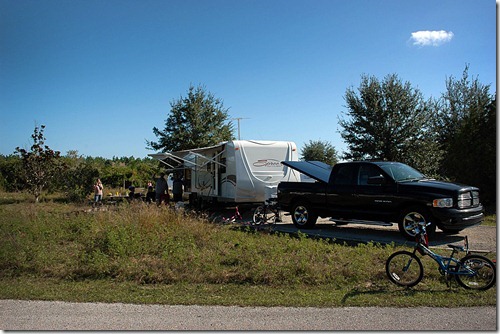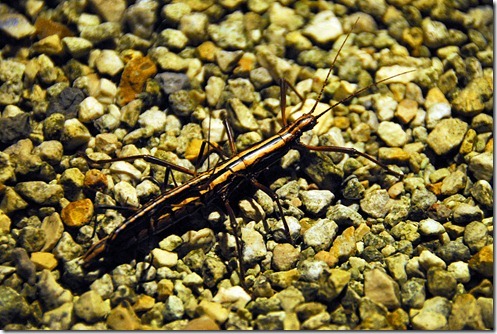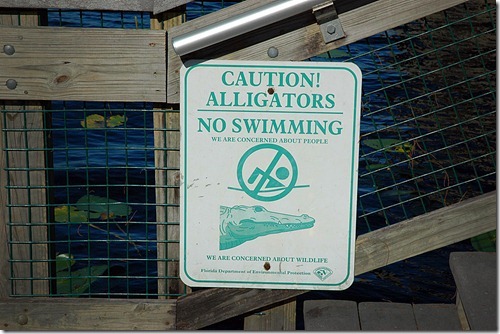Or not:
And I wasn’t going to harass them either. How do you harass a manatee anyway? It’s not like I was going to call them rude names or make manatee tacos. I planned on just giving them a little scratch behind the ears. Oh well…
Which brings us to Blue Spring State Park, home of the aforementioned manatees, and our campground for two nights, Saturday and Sunday:
Blue Spring State Park covers more than 2,600 acres, including the largest spring on the St. Johns River. Blue Spring is a designated Manatee Refuge and the winter home to a growing population of West Indian Manatees. The spring and spring run are closed during Manatee season, mid-November through March.
For centuries, the spring area was home to Native Americans. In 1766 it was visited by Colonial American botanist John Bartram, but it was not until 1856 that it was settled by Louis Thursby and his family. The Thursby house, built in 1872, remains standing. The spring´s crystal clear, 73 degree water can be enjoyed by swimmers, snorkelers, and certified scuba divers with a partner. The river is popular for fishing, canoeing, and boating. Just not swimming with the manatees.
A short walk from our campsite is a trail that leads to a boardwalk that ends up at Blue Spring:
We spotted a momma manatee with a young one, but it was hard to get photos because you are not allowed to stray from the boardwalk. Probably to discourage jumping in for a dip. This is the best I could do:
That is the baby (about 4 feet long), and those white marks on it’s back are from prop slashes made by a boat, which is one of the major causes of injury and death for manatees. These harmless vegetarians frequent popular watersport areas and I noticed many boaters not obeying the signs:
Blue Spring empties into St. John’s River, which is where we went canoeing on Sunday. The colors were vibrant:
I tried to get photos of some of the birds we saw but it was hard to do from a rocking canoe:
That white speck in the middle turned into this when I zoomed in:
We left Monday morning and stopped at Sebastian Inlet State Park for photos. The last one shows a small herd of fisherman on the water:
The premier saltwater fishing spot on Florida's east coast, this park is a favorite for anglers nationwide for catching snook, redfish, bluefish, and Spanish mackerel from its jetties. Surfing is also a popular recreation and several major competitions are held here every year. Two museums provide a history of the area. The McLarty Treasure Museum features the history of the 1715 Spanish treasure fleet; the Sebastian Fishing Museum tells the history of the area's fishing industry.
Three miles of beautiful beaches provide opportunities for swimming, scuba diving, snorkeling, shelling, and sunbathing. Canoeing and kayaking in the Indian River Lagoon are also favorite pastimes. Visitors can relax with a stroll down the mile-long Hammock Trail. Waterfront pavilions and picnic areas are great for family outings. Full-facility campsites and a boat ramp are available. Located on State Road A1A 15 miles south of Melbourne Beach.
Our destination for Monday is Jonathan Dickinson State Park where we are camping for three nights. Be aware that the Pine Grove campground, sites 1-90, (third photo below) was wiped out by a hurricane in 2006. It was rebuilt but offers no shade.
Located just south of Stuart, this park teems with wildlife in 13 natural communities, including sand pine scrub, pine flatwoods, mangroves, and river swamps. The Loxahatchee River, Florida's first federally designated Wild and Scenic River, runs through the park. Ranger-guided tours of the 1930s pioneer homestead of Trapper Nelson are available year-round. Visitors can enjoy paved and off-road biking, equestrian, and hiking trails.
Boating, canoeing, and kayaking along the river are also great ways to see the park. Anglers can fish along the riverbank or from a boat. The nature and history of the park comes to life through exhibits and displays in the Elsa Kimbell Environmental Education and Research Center. Programs for the kids, or for the whole family, are also offered here. The park also offers two full-facility campgrounds and a youth/group primitive campground, for some reason located next to the alligator viewing area. Visitors can arrange boat tours of the river and rent canoes, kayaks, and motorboats.
Tuesday morning we were feeling gung ho and decided to scale the tallest mountain in South Florida. All 86 feet of it:
This is the view from the top :
I decided to enhance it a bit because, well, it needed it.
Wednesday we went canoeing on the Loxahatchee River. Still looking for our first alligator sighting. The chances look good:
We met some kayakers Tuesday night and agreed to meet at the boat launch the next morning. Off we go:
This looks like gator ground:
And thar she blows!
We also came across Ospreys, Blue Heron, and even a turtle:
There were also hundreds of jumping fish. The river had a prehistoric feel to it, very ancient and primeval. A screeching Blue Heron sounds a lot like one of those flying dinosaurs.
I also learned that not only can you not feed or entice alligators, you can’t even molest them. What fun is that?
Regards,
Greg
